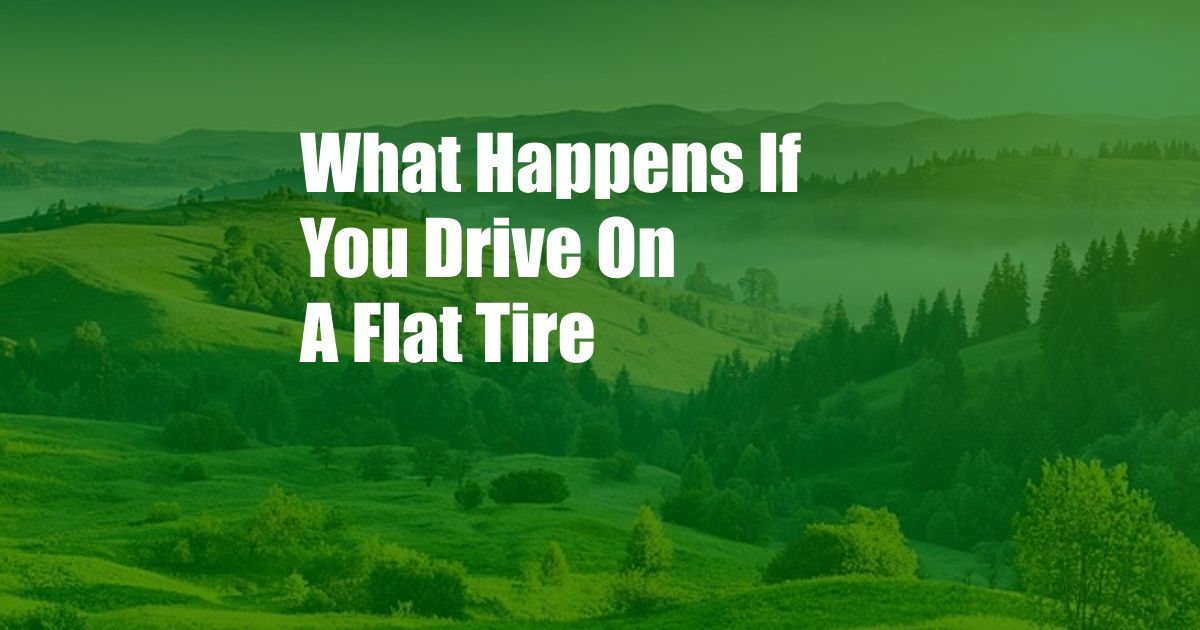
What Happens if You Drive on a Flat Tire?
I’ve been there – driving down the highway, minding my own business, when suddenly I hear a loud bang. I pull over to the side of the road and, sure enough, I have a flat tire. What do I do now? I’ve seen it happen to other people, but I’ve never experienced it myself.
Driving on a flat tire is not a good idea. It can cause serious damage to your car and can even be dangerous. If you have a flat tire, it’s important to pull over to the side of the road and change it as soon as possible. But what happens if you don’t? What happens if you keep driving on a flat tire?
Types of Damage Caused by Driving on a Flat Tire
Driving on a flat tire can cause a variety of different types of damage to your car, including:
- Damage to the tire: The tire sidewall is not designed to bear the weight of the car. As you drive on a flat tire, the sidewall will start to break down. This can lead to a blowout, which can be dangerous for you and other drivers.
- Damage to the wheel: The flat tire can also damage the wheel. The weight of the car on the flat tire can cause the wheel to bend or crack.
- Damage to the suspension: The flat tire can put extra stress on the suspension system. This can lead to damage to the springs, shocks, and other suspension components.
- Damage to the brakes: The flat tire can also affect the brakes. The flat tire can cause the brake pads to wear unevenly. This can lead to reduced braking performance.
What are the Risks of Driving on a Flat Tire?
In addition to the damage to your car, driving on a flat tire can also be dangerous. A flat tire can make your car more difficult to control. This can increase the risk of an accident.
If you have a flat tire, it’s important to pull over to the side of the road and change it as soon as possible. Driving on a flat tire can cause serious damage to your car and can even be dangerous. If you’re not sure how to change a tire, call for roadside assistance.
Tips for Avoiding a Flat Tire
There are a few things you can do to avoid getting a flat tire:
- Check your tire pressure regularly: The correct tire pressure will help prevent blowouts.
- Avoid driving on sharp objects: Sharp objects like nails and glass can puncture your tires.
- Be careful when driving on construction sites: Construction sites often have nails and other sharp objects that can puncture your tires.
- If you do get a flat tire, pull over to the side of the road and change it as soon as possible: Driving on a flat tire can cause serious damage to your car and can even be dangerous.
FAQ About Flat Tires
Q: What should I do if I get a flat tire?
A: If you get a flat tire, pull over to the side of the road and change it as soon as possible. If you’re not sure how to change a tire, call for roadside assistance.
Q: What are the risks of driving on a flat tire?
A: Driving on a flat tire can cause serious damage to your car and can even be dangerous. A flat tire can make your car more difficult to control, which can increase the risk of an accident.
Q: How can I avoid getting a flat tire?
A: There are a few things you can do to avoid getting a flat tire, including checking your tire pressure regularly, avoiding driving on sharp objects, and being careful when driving on construction sites.
Conclusion
Driving on a flat tire is never a good idea. It can lead to serious damage to your car or even cause an accident. If you get a flat tire, it’s important to pull over to the side of the road and change it as soon as possible. By following the tips above, you can help avoid getting a flat tire and keep yourself and your passengers safe on the road.
Call to Action: If you want to learn more about flat tires, please visit our website or give us a call today.